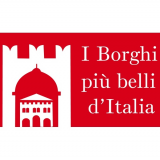
 I borghi più belli d'Italia
I borghi più belli d'Italia
Italian little italies: San Leo, Emilia Romagna
- WTI Magazine #89 Mar 16, 2017
-

 I borghi più belli d'Italia
I borghi più belli d'Italia
San Leone, together with San Marino, came here from the coast of Dalmazia to evangelize this area, the name of the village is a tribute to San Leone.
A MEDIEVAL VILLAGE WITH AN IMPORTANT MILITARY AND RELIGIOUS HISTORY
The fortress of San Leo (nearly 600 feet high) overlooks the surrounding valley with the Marecchia river and a landscape of woods, between the rocks and the sea. The village is surrounded by a relaxing atmosphere, away from the nightlife of the Riviera of Romagna. The tour begins with the Parish Church, the more ancient building in the village, that is considered the heart of the medieval city. The church was probably built during the Carolingian period (between 8th and 10th century). The interior has a plan with a nave and two aisles separated by pillars and columns made of materials from the Roman period.
The cathedral dedicated to San Leone was erected in the same period, near the parish church; now it has a Romanesque Lombard look with a bell tower probably of Byzantine origins and Roman elements. The parish church with the cathedral and the tower are the Romanesque heart of the village.
The civil buildings are in Piazza Dante Alighieri : Palazzo della Rovere, the residence of the Counts of Montefeltro dukes of Urbino, today the town hall; Palazzo Nardini (13th - 16th century) visited by San Francesco in 1213 and Palazzo Medici, built by the Della Rovere family and refurbished by the Medici family (1517-1521).
The medieval stronghold, defended by square towers, was completely redesigned by the architect Francesco di Giorgio Martini from Siena,the new design allowed to defend the village from the enemies, no matter where the attack came from. The fort was the protagonist of important war events during the Renaissance, it was also known as ''the impregnable fortress''. In 1631, during the papal government, the fortress was converted into a prison, numerous antipapal patriots were imprisoned here, the most famous was the count of Cagliostro.
LOCAL PRODUCTS AND DISHES
Licorice is the basic ingredient of the “Balsamo di Cagliostro”, the local digestive liqueur. Cheese with walnut leaves and the Honey of San Leo are the other local products.
The local dish is ''Rabbit with fennel''.